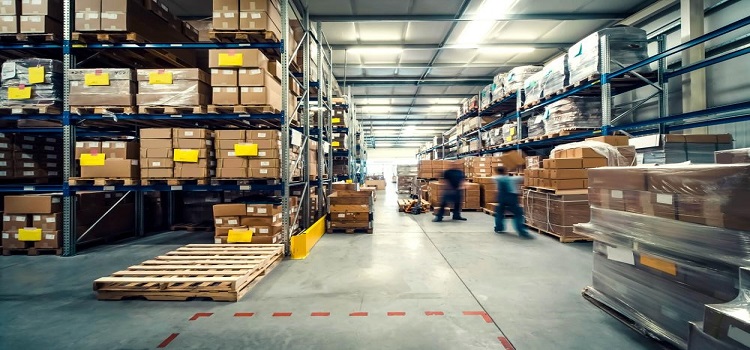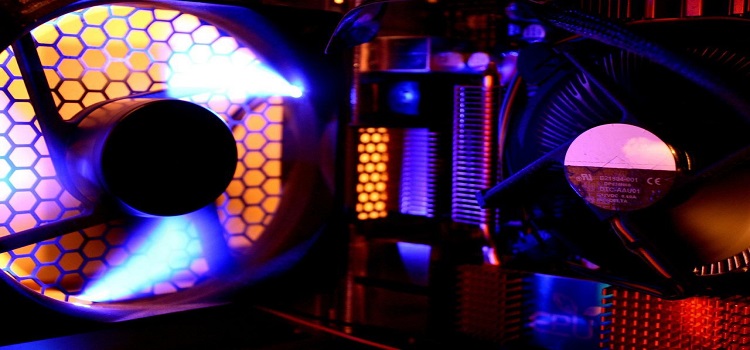
Source: SHarms/Shutterstock.com
The holidays are upon us, which means your warehouse is likely gearing up for a flurry of activity. November and December tend to be the busiest times of the year for the warehousing industry. In 2018, Cyber Monday generated $7.9 billion in online sales—making it the biggest sales day in the history of U.S. eCommerce.
Today, many consumers prefer to do their holiday shopping online as opposed to waiting in line in a store. Instead of dropping off products in bulk at a local retailer, warehouses all over the country must now deliver products to individual consumers all over the country. Whether you plan on partnering with national couriers like UPS or delivering these products yourself, optimizing your warehouse for peak season will help you and your team prepare for the holiday rush. It’s all about getting orders out on time and stocking your inventory accordingly, or your customers may not have what they need for the big celebration.
Also Read: From Where Can I Get The Best Cyber Monday Deals
With so much riding on the holiday season, your business can’t afford to wing it. The holiday season now accounts for around 20 percent of the retail industry’s annual sales, and it is often responsible for up to 30 percent of some individual retailers’ total sales. Regardless of what’s being stored in your warehouse or what holiday you celebrate, use these tips to get your warehouse ready for the peak season.
Get Preventative Maintenance Out of the Way
Nearly every warehouse depends on some form of technology, including forklifts, barcode scanners, inventory tracking software and automated technology like pickers and stockers, but there’s always a chance this technology could fail when you need it most. Nothing will slow down your warehouse like a broken piece of equipment. Routine processes that would normally take just a few minutes may now take the better part of an hour, delaying your operations in more ways than one.
That’s why it’s best to get your preventative maintenance out of the way before the peak rush arrives. Preventative maintenance is designed to address potential mechanical issues before they disrupt your operations. Instead of waiting for a piece of equipment to fail, you can take it offline when it’s not in use and make sure it’s running properly. If you’re unfamiliar with the mechanics of your machinery, schedule an onsite visit with a technician as soon as possible. It may be difficult to get someone in the warehouse at the height of peak season.

Source: tsyhun/Shutterstock.com
Manually Inspect Your Inventory
Inventory tracking systems aren’t always 100 percent accurate. While they can help you predict inventory shortages, there’s a chance that the number of products in the system isn’t the same as the number of products on the shelf. Before the rush heats up, have your team conduct a manual inspection of your inventory so you can address any discrepancies in the system.
When products start flying off the shelf, a small miscalculation or inaccurate readings can throw your entire warehouse into chaos. Your team may need to retrieve products that aren’t actually there, or excess inventory may start piling up around your warehouse. Without an accurate count of your inventory, there’s a good chance you may end up disappointing some of your customers.
Optimize Slotting Based on Seasonal Demand
Product slotting refers to how you organize your inventory on the shelf. Without a coherent system in place, your team may have trouble retrieving the products they need and sending them out for delivery.
To speed up the order fulfillment process, keep your best-selling items close to the loading dock. Invest in the proper rack systems to organize your inventory. Break up dissimilar items with bins and plastic totes so your team can find what they need as quickly as possible.
When you organize your fulfillment center with stack racks, your team can quickly scan their surroundings and find the items they need without second-guessing themselves. Divide your stack racks into different zones or sections based on SKU numbers and product types. Use labels and proper signage to point your team in the right direction.
Containers like wire baskets for storage help keep your warehouse flexible during the busy season. Use mesh containers to keep your products visible. Wheeled containers make it easier to move your inventory. It’s all about finding the right type of container for your business.

Source: Don Pablo/Shutterstock.com
Consider Moving Less Popular Inventory Offsite
As you start stocking up on some of your most popular products, you may run out of space in your warehouse. If some of your products tend to sit on the shelf during the holiday season, consider moving some of your inventory offsite to make more room in your facility. Your team won’t have to visually scan as many products on the shelf and everyone will have more room to focus on the task at hand. You won’t have to worry as much about team members knocking into each other, accidentally damaging your products, or running out of shelf space when you need it most.
Streamline Order Fulfillment to Limit Product Touches
You can also adjust your operations and the order fulfillment process to get packages out the door as fast as possible. If your customers tend to order the same item over and over again, store popular items in the loading dock. Invest in cross-docking so you don’t have to waste time putting popular items back on the shelf. Create a temporary gift-wrapping station to give your team more room when preparing packages.
The nature of your business will likely change over the next several months. Use your warehouse management software to get a better sense of what your customers will be buying this holiday season. You can then adjust your operations accordingly.
Preparing for the holiday season all depends on what your customers are looking for. Use data and previous seasons to better optimize your warehouse for the coming rush. Once the peak season is over, you can put your warehouse back the way it was.












